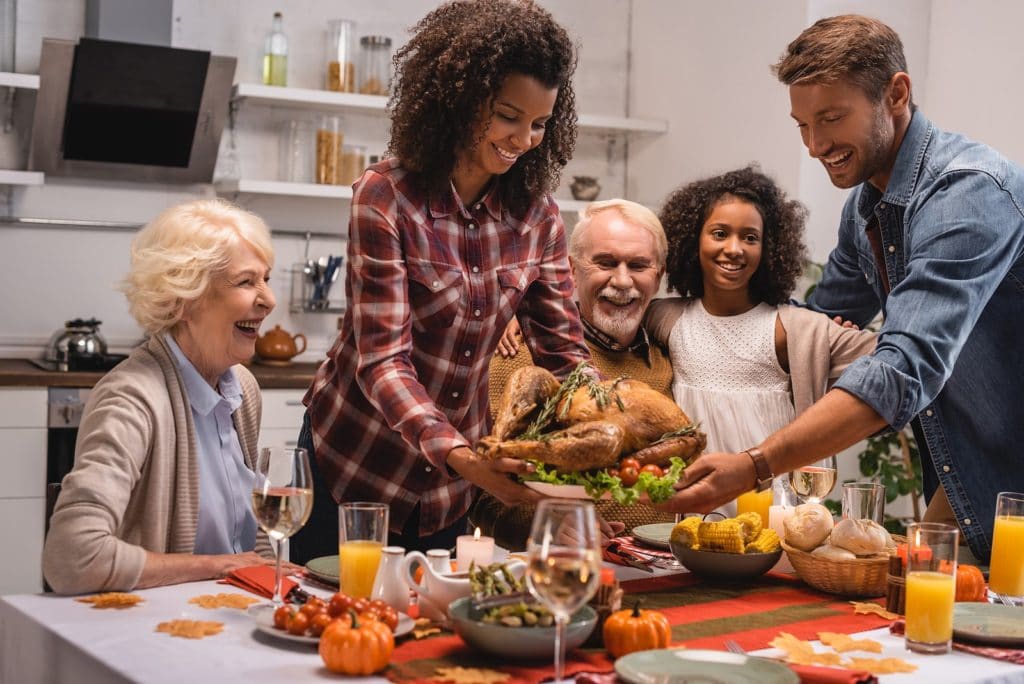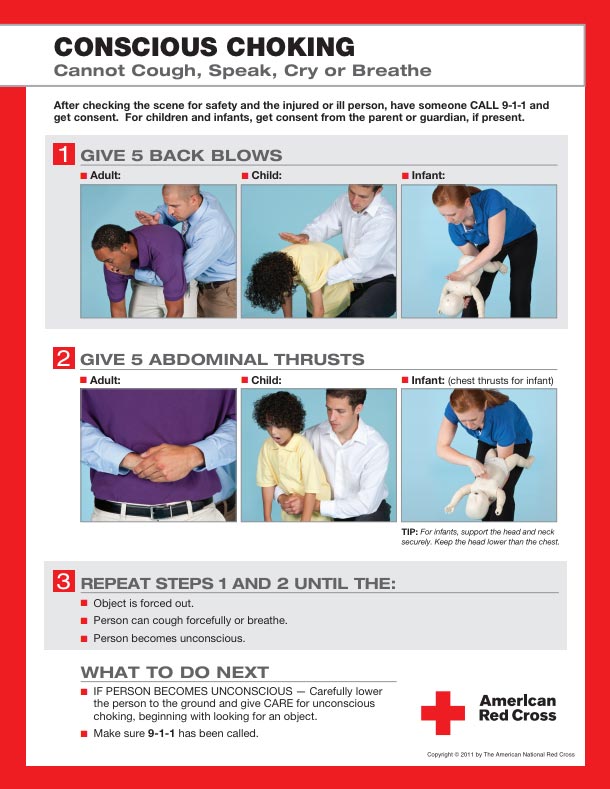
Thanksgiving is all about celebrating and having a great time with family and friends. Food is a big part of the day. The rituals of preparing food and serving our loved ones is what draws us to the holiday. We look forward to enjoying turkey, dressing, and our favorite side dishes. Smart celebrations consider the health and safety of our guests.
To do this, we take the steps necessary to prevent choking and prepare and store food safely. Here are some tips to help you keep your family safe and healthy during your holiday celebration.
Prevent Choking
When food gets stuck in the windpipe and we choke, we may need the help of another in an emergency. Serving age-appropriate food for guests with children and babies is thoughtful and prevents accidents.
The most common sign of choking is a person clutching their hands to the throat. However, there could be other indications, like difficulty or noisy breathing, inability to speak, weak or forceful cough. Sometimes the person’s skin and lips may turn blue, and they could even lose consciousness.
During choking, the oxygen supply to the brain is cut off, and it’s critical to give first aid as quickly as possible at this time. The American Red Cross recommends a ‘five-and-five’ approach to deliver first aid for choking.
These steps are:
- Give five blows to the back, where you deliver five separate blows between the person’s shoulder blades with the heel of your hand.
- Give five abdominal thrusts or the Heimlich maneuver.
- Give five blows and five thrusts alternately until the blockage is dislodged.
(Mayo Clinic, 2020)

Click here to download the Guide
If the person is unresponsive or you cannot dislodge the object, call 911 to get help.
Food Safety Tips
Along with choking, there may be an increase in cases of food poisoning around the holidays, especially during Thanksgiving. Here are some tips to help you prepare your turkey meal safely.
Thawing the Turkey
Do not thaw the turkey by leaving it at room temperature, as this makes it unsafe. Thaw the turkey in a container in the refrigerator or microwave. You can also thaw it by placing it in a leakproof plastic bag in a sink of cold water but make sure to change the water every 30 minutes.
Handling the Turkey
According to the Centers for Disease Control and Prevention (CDC), the four steps to food safety are clean, separate, cook and chill. Always wash your hands with soap and warm water for 20 seconds before and after handling the turkey or raw meat. Also, wash cutting boards, dishes, utensils, and countertops with soap and warm water before and after handling the turkey. Use a separate cutting board for the turkey. Do not place cooked food or fresh produce on any surface that previously held raw turkey.
Cooking the Stuffing
It’s better to cook the stuffing separately from the turkey in a casserole dish to make sure it is cooked thoroughly. If you want the filling to be cooked in the turkey, fill it inside just before cooking.
Always use a food thermometer to check that the stuffing’s center reaches a safe minimum temperature of 165 ℉. If the temperature does not reach 165 ℉, bacteria could survive in it, leading to food poisoning. After removing the turkey from the oven, wait for about 20 minutes before removing the stuffing to allow the stuffing to cook a little more. (CDC, 2021)
Cooking the Turkey
Set the oven temperature to at least 325 ℉. Place the completely thawed turkey in a shallow roasting pan to cook. Always use a food thermometer to check that the turkey’s internal temperature has reached 165 ℉. Apart from the center of the stuffing, insert the food thermometer into the thickest portions of the turkey like the thigh, breast, and wing joint. Allow the turkey to stand for 20 minutes before you remove the stuffing and carve the meat. (FSIS)
Storing Leftovers
Discard any turkey, stuffing, gravy, etc., that’s been left out at room temperature for more than 2 hours. Divide leftovers into small portions and use refrigerated turkey, gravy, or stuffing within 3 to 4 days.
During the holiday season, safety must be high on our priority list. It’s also essential to keep a mindful eye on children and the elderly and take the necessary precautions so everyone has a safe and healthy holiday.
Happy Thanksgiving!
Whether it is your first time to thaw and cook a turkey or host Thanksgiving, the last thing we want to do is have to handle an emergency that could have been avoided. Keep these tips in mind as you eat too much, laugh too much, and love our friends and family around the Thanksgiving dinner table. Happy Thanksgiving from our family to yours!
Works Cited
Mayo Clinic. “Choking: First Aid.” Mayo Clinic, Mayo Foundation for Medical Education and Research, 14 Oct. 2020,
www.mayoclinic.org/first-aid/first-aid-choking/basics/art-20056637.
CDC. “Food Safety Tips for Your Holiday Turkey.” Centers for Disease Control and Prevention, Centers for Disease Control and Prevention, 5 May 2021,
www.cdc.gov/foodsafety/communication/holiday-turkey.html.
FSIS. “Food Safety and Inspection Service.” Let’s Talk Turkey-A Consumer Guide to Safely Roasting a Turkey | Food Safety and Inspection Service,
www.fsis.usda.gov/food-safety/safe-food-handling-and-preparation/poultry/lets-talk-turkey-roasting.
